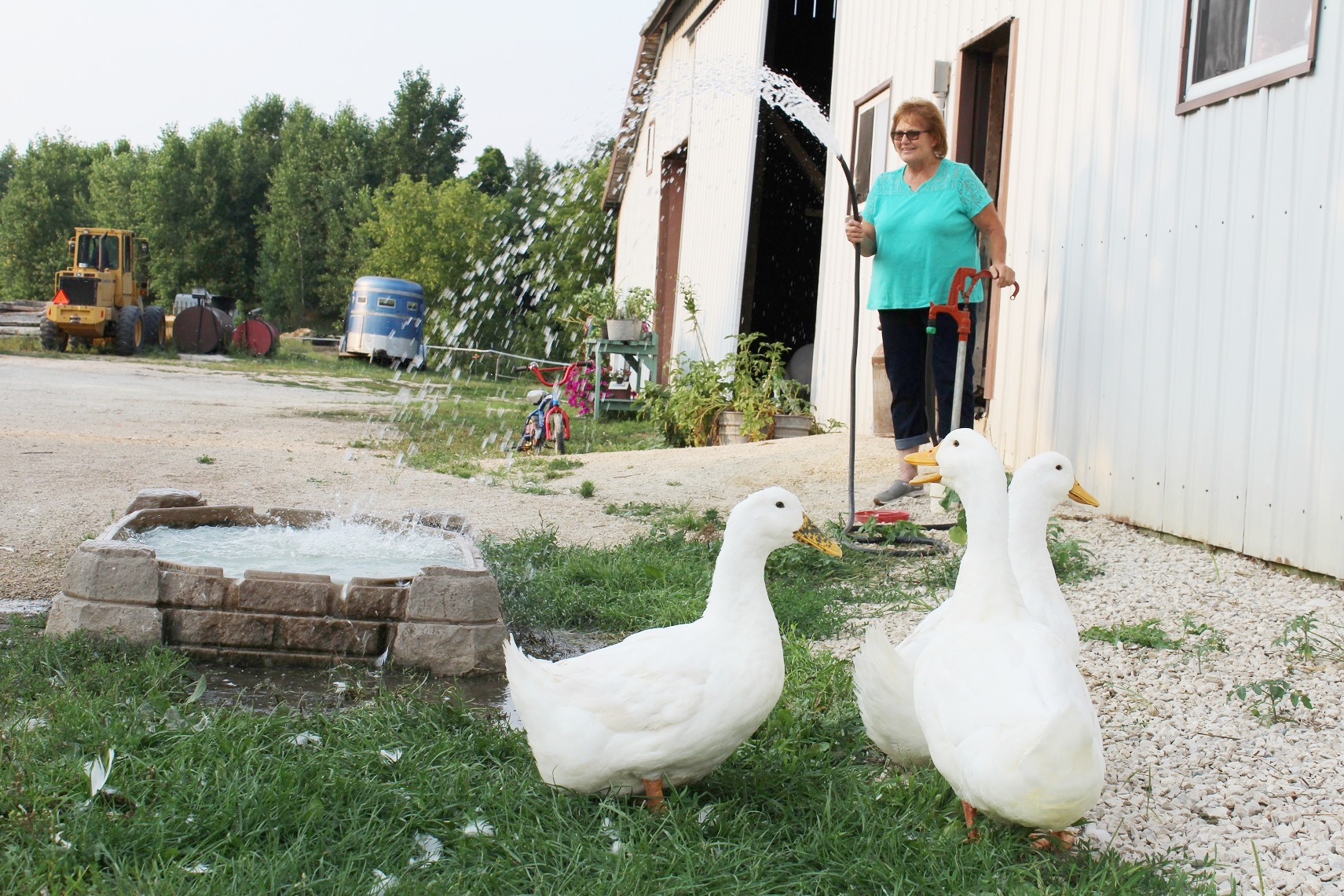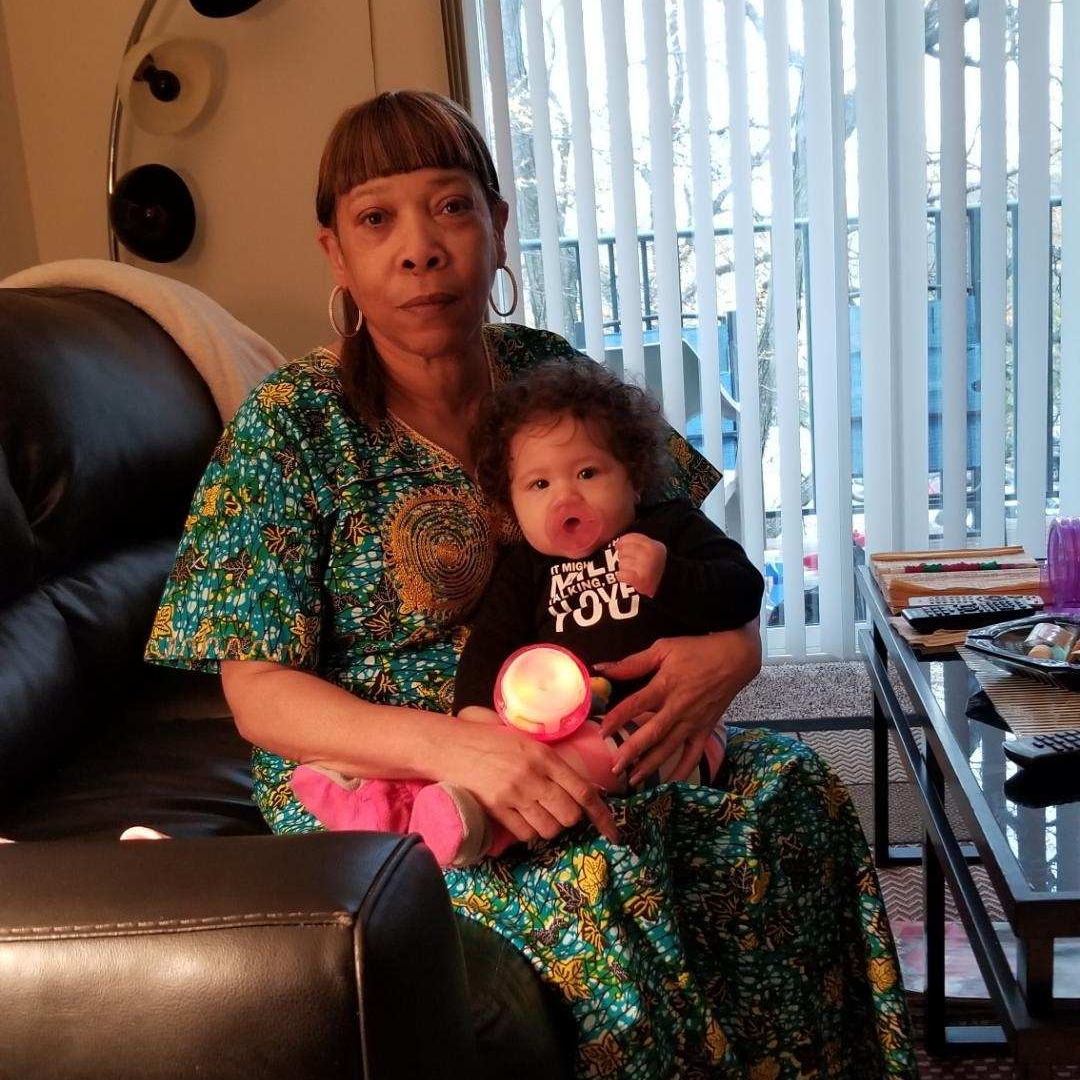When Lynda Cochart was a toddler in the early 1950s, a tree fell on her father and broke his back, leaving him paralyzed from the waist down.
Cochart’s dad was a dairy farmer in Kewaunee County in northeastern Wisconsin, on the same land where his father farmed before him. As bad as the accident was, it didn’t derail his career. Lynda remembers how her dad would literally crawl from their home to the barn each morning while she and her brother held one of his legs. Improvising like that, her dad farmed until his death at age 89.
“That’s how we learned to work so hard,” Cochart, 70, said of her father’s example. “He could do anything.”
Lynda’s dad, in many ways, was her role model: a guy who never complained and never gave up. More than 40 years ago, Lynda followed in his footsteps when her family bought a farm next to her father’s land. Today, she still grows hay and raises a few horses, cattle, ducks, chickens, and even peacocks on 279 acres. Inside her kitchen are jars of homegrown pickles and fat tomatoes. Her home is pretty and peaceful.
But farms in Kewaunee County aren’t all this way.
Cattle outnumber people in Kewaunee County by a nearly 5-to-1 ratio, and the county is home to 16 Concentrated Animal Feeding Operations, or CAFOs, which have a thousand animals or more.
Not surprisingly, all those cattle generate a lot of manure: approximately 700 million gallons per year, according to a 2017 article by the Wisconsin Center for Investigative Journalism.
Lynda’s home is within two miles of two CAFOs. Even for a born-and-raised farm girl, the smell is too much.
“It's choking to me,” she says.
Lynda says the fumes have driven many neighbors away, and she worries the air is making those who remain sick, including herself. Odors have been shown to affect the mental health of those living close to factory farms. Furthermore, factory farms increase asthma in neighboring communities, particularly in children.
Manure in Kewaunee County has also made a mess of the water. Up to 60 percent of private wells tested in 2016-17 contained fecal microbes like cryptosporidium, rotavirus, and e-coli. These cause nausea, vomiting, and diarrhea and can easily be life threatening to those with lowered immune systems. Infections are more likely to be caused by germs with antibiotic resistance around factory farms. Lynda got a resistant staph infection in 2012 she suspects came from her water.
As a Kewaunee County native, it took Lynda a while to believe her water was contaminated. She remembers years ago asking Mark Borchardt, a microbiologist with the U.S. Department of Agriculture’s Agricultural Research Service, to level with her.
“I said, ‘Can it really be that bad?’ And (Borchardt) said, ‘Lynda, your water breaks my heart,’ ‘Well, I shower in it,’ I said, and he said, ‘Well, certainly keep your mouth shut and your eyes closed when you shower.’ That was awful.”
For years, Lynda and her family would drive more than 20 miles round-trip, three times a week, to fill jugs with safe tap water at an area high school. She’d also drive to her son’s house to shower. It felt “crazy,” to do those things in a water-rich state like Wisconsin, she says.
But during that time, Lynda also joined a growing number of people raising questions about CAFOs. She’s since spoken up at countless meetings, been on TV, and testified in court. There have been some small victories along the way—new wells for residents, including hers, and a court order in 2014 for a CAFO to install its own monitoring wells.
Still, after all these years, Lynda offers only bottled water or canned soda to guests. She still doesn’t trust what comes out of her faucet. She recalls using bottled water to clean up a small cut on her granddaughter, rather than risk infecting her with tap water. She worries whether the contamination could hurt her animals.
“The other day I didn't have a bottle of water in here and I had to take my thyroid pill in the morning with a glass of (tap) water,” she says. “It was hard. I filled enough for two swallows and shut it off. That was all I could take.”
When Lynda’s arm injury got infected in 2012, the pain was excruciating. Her doctors were shocked she didn’t seek treatment earlier. But, like her dad, she tried to tough it out.
Having unsafe water in her home is different, she says. “Toughing it out” is not an option. With her neighbors’ and relatives’ health at stake, Lynda says she’ll keep pushing for change, even if it wears her down.
“I've buried two children in my lifetime, so I’ve learned to really handle what life throws at me. But this has been ongoing for eight years. It's on your mind steady.
“It's continual stress,” she says. “It just never ends.”








